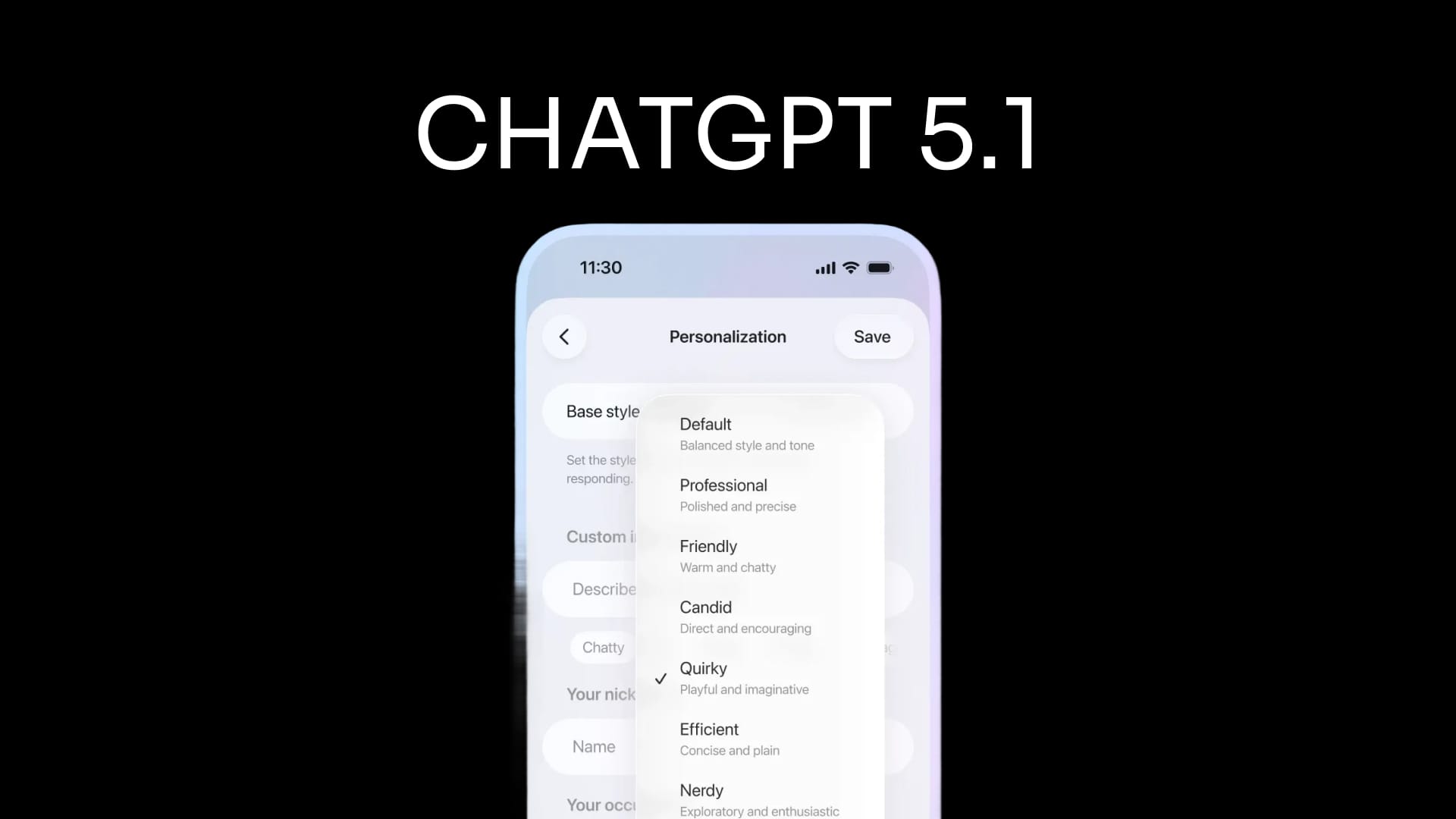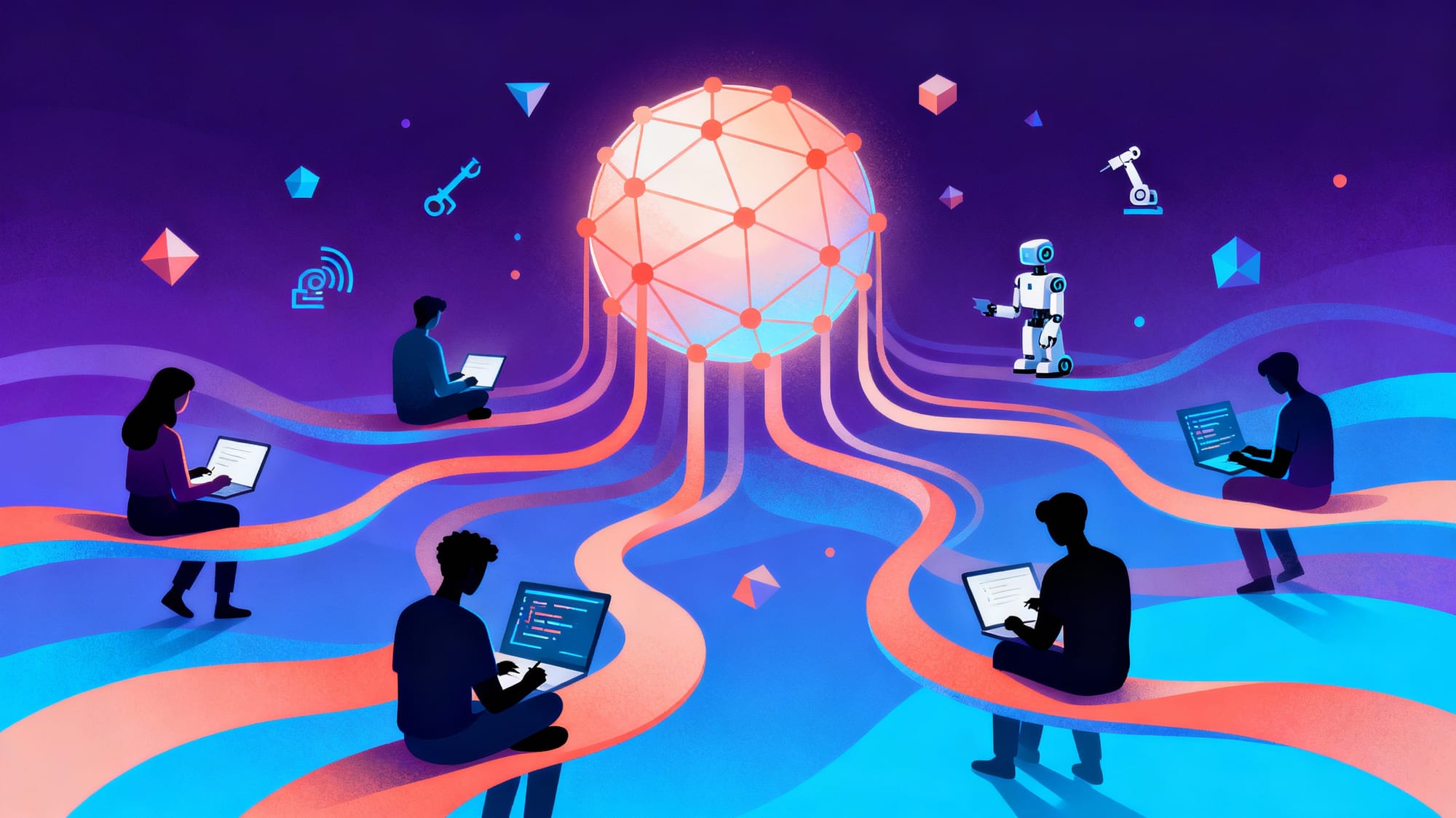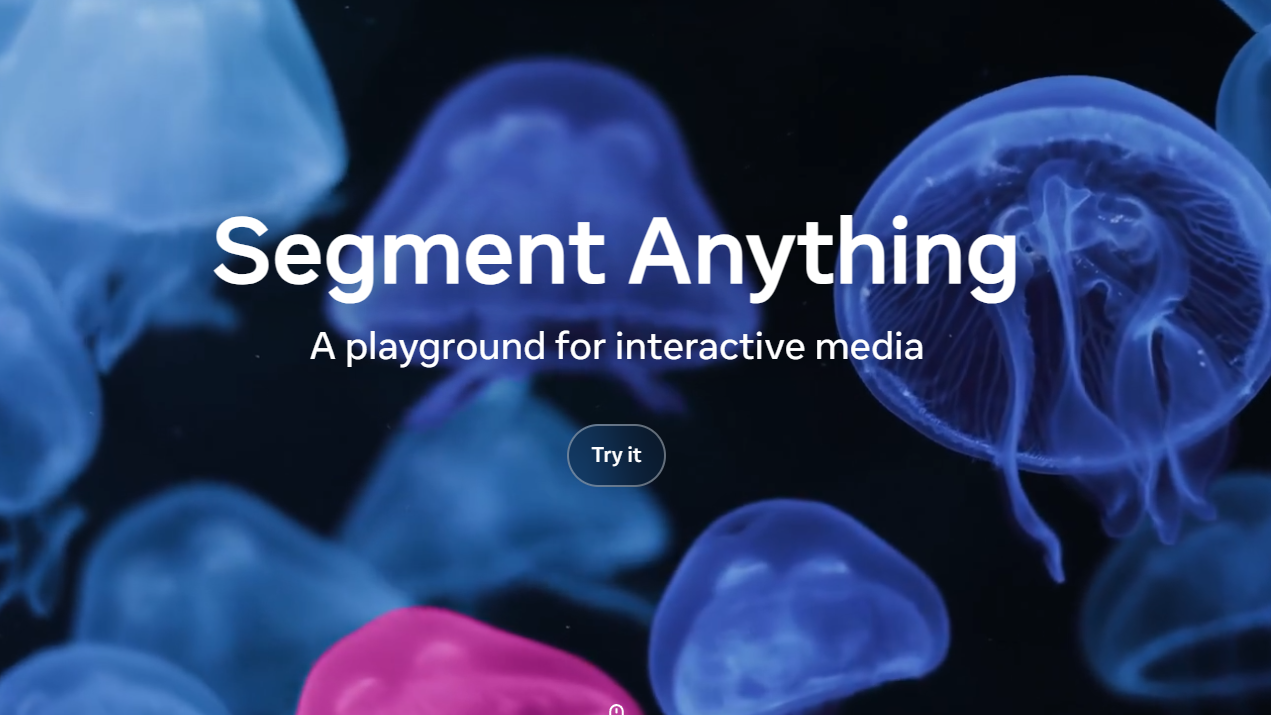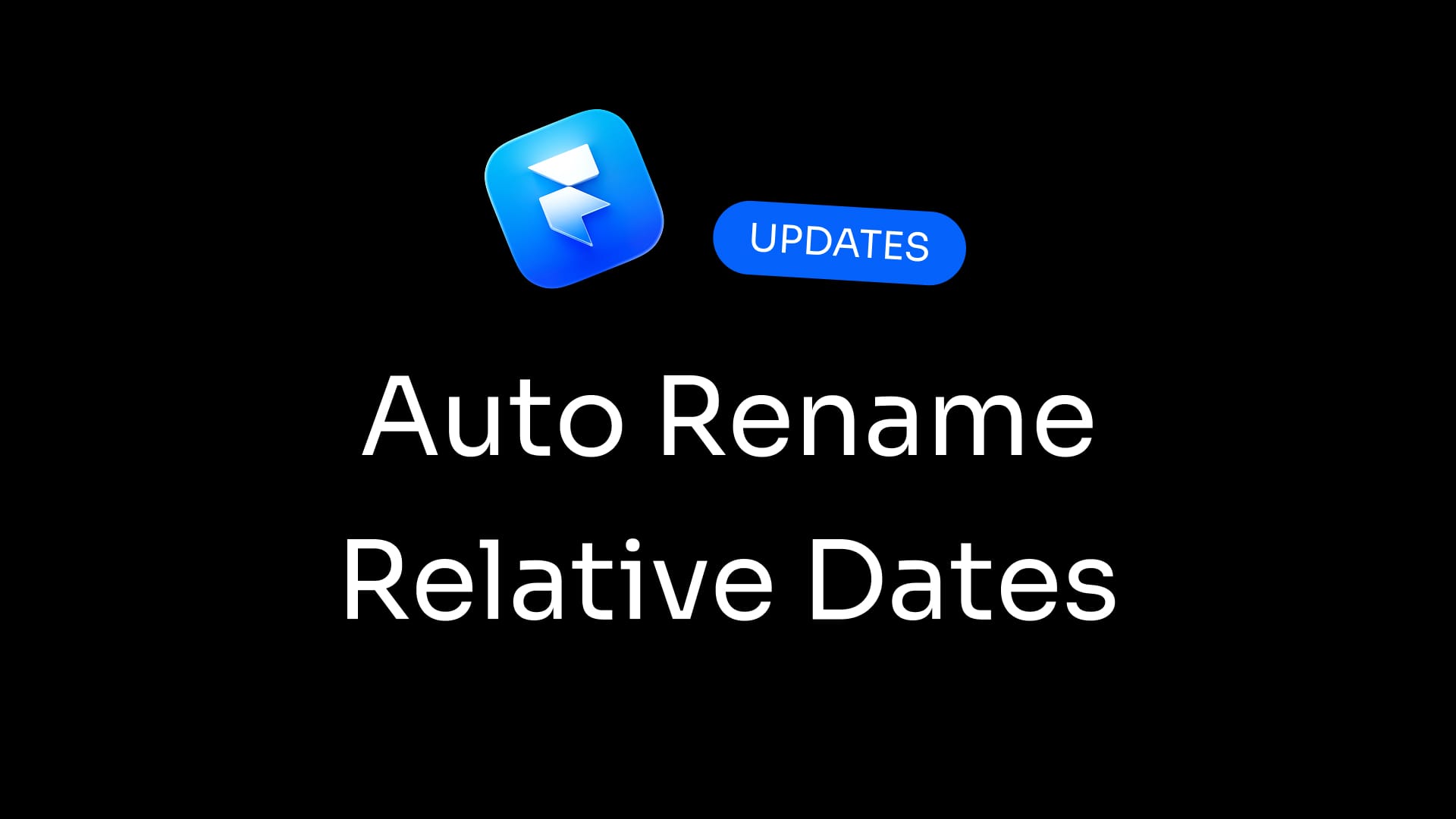OpenAI has launched GPT-5.1, a major upgrade to its flagship AI model series that brings warmer, more conversational interactions and smarter reasoning capabilities to ChatGPT. The release, announced November 13, 2025, introduces two distinct variants—GPT-5.1 Instant and GPT-5.1 Thinking—designed to balance speed with complex problem-solving while maintaining more natural, human-like communication. CEO Sam Altman called the update a "nice upgrade," particularly highlighting improvements in instruction following and adaptive thinking.
Two Models for Different Needs

GPT-5.1 Instant serves as ChatGPT's most-used model, optimized for quick, conversational exchanges with a noticeably warmer and more playful tone while remaining clear and useful. The model now uses adaptive reasoning to determine when to pause and think before responding to challenging questions, resulting in more thorough and accurate answers without sacrificing speed on simpler queries. GPT-5.1 Thinking, the advanced reasoning variant, adapts its processing time more precisely—spending more time on complex problems while responding faster to straightforward requests. According to OpenAI's internal benchmarks, GPT-5.1 Thinking runs roughly twice as fast on easy tasks and about twice as slow on the most difficult ones compared to its predecessor.
Enhanced Instruction Following
The update addresses user feedback about GPT-5's occasionally detached feel, which emerged during its rocky August 2025 debut. GPT-5.1 demonstrates significantly improved instruction following, more reliably answering the specific question asked rather than providing tangential information. Both variants feature clearer responses with less jargon and fewer undefined terms, making the technology more approachable for explaining technical concepts and handling complex work tasks.
Expanded Customization Options

OpenAI is introducing six personality presets—Default, Friendly, Efficient, Professional, Candid, and Quirky—allowing users to tailor ChatGPT's communication style to their preferences. The company is also experimenting with granular controls that let users tune specific characteristics including conciseness, warmth, response scannability, and emoji frequency directly from personalization settings. ChatGPT can now proactively offer to update these preferences during conversations when it detects users requesting certain tones or styles. Updates to personalization settings take effect immediately across all chats, including ongoing conversations, rather than applying only to new sessions.
Rollout and Availability
GPT-5.1 Instant and Thinking began rolling out November 13, starting with paid subscribers on Pro, Plus, Go, and Business plans before expanding to free and logged-out users. Enterprise and Education plans receive a seven-day early-access toggle before GPT-5.1 becomes the default model for all users. The previous GPT-5 models will remain available in ChatGPT under a legacy models dropdown for paid subscribers for three months, giving users time to compare and adapt. OpenAI plans to bring both GPT-5.1 variants to its API later this week, with GPT-5.1 Instant released as gpt-5.1-chat-latest and GPT-5.1 Thinking as GPT-5.1 in the API, both featuring adaptive reasoning.
Performance Improvements
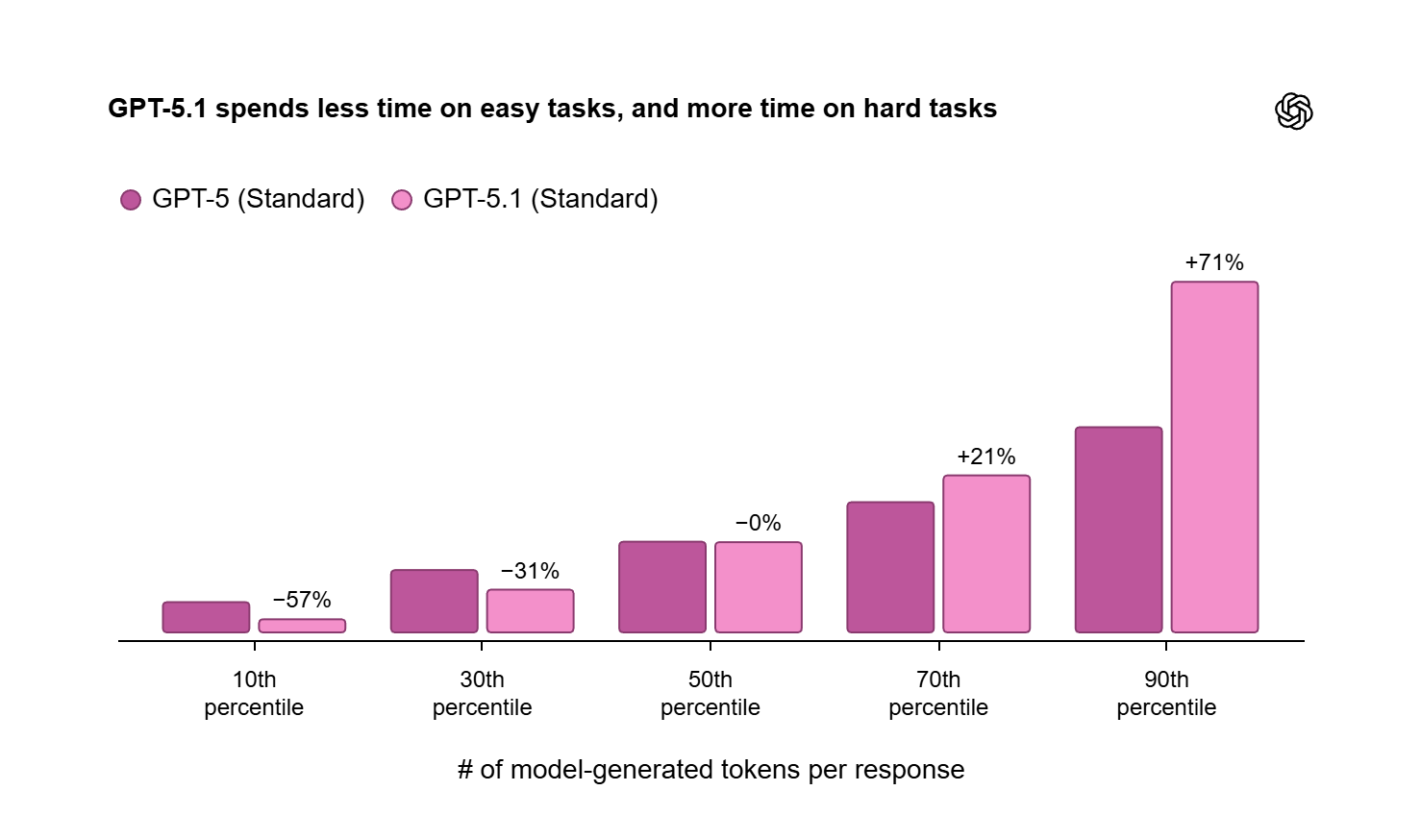
The adaptive reasoning capability marks a significant advancement, with GPT-5.1 Instant showing substantial improvements on mathematics and coding evaluations including AIME 2025 and Codeforces benchmarks. GPT-5.1 Auto continues to automatically route each query to the most suitable model, eliminating the need for manual model selection in most cases. The system transparently makes routing decisions in the background, directing simple queries to Instant for fast responses and complex requests to Thinking for deeper analysis while balancing speed, quality, and computational cost.
⚠️ What to watch / limitations
As with any large model, some caveats apply:
- Even though it’s more efficient, complex reasoning still costs more compute / tokens. Use the reasoning mode judiciously.
- For high-stakes outputs (legal, medical, safety-critical) you’ll still want human oversight. The model is better, but not infallible.
- The “tone/personality” controls are powerful, but mis-prompting can still lead to mis-alignment (e.g., too verbose, off-topic).
- Tool-usage or agentic workflows require careful orchestration (i.e., how you integrate shell calls, code edits, etc).
- The newer features (instant vs thinking, extended caching) may have usage/availability constraints depending on plan/APIs.

Sources
- OpenAI GPT-5.1 announcement
- OpenAI developer documentation for GPT-5.1
- GitHub Blog - GPT-5.1 in GitHub Copilot
- Jagran Josh - ChatGPT 5.1 launch coverage
- Ars Technica - GPT-5.1 personalities analysis
- Economic Times - GPT-5.1 feature overview
- NDTV - OpenAI GPT-5.1 rollout details
- DataCamp - GPT-5.1 technical breakdown
- Cashify - ChatGPT 5.1 upgrades summary
- Scalevise - GPT-5.1 features analysis
- The Verge - GPT-5.1 personality options



